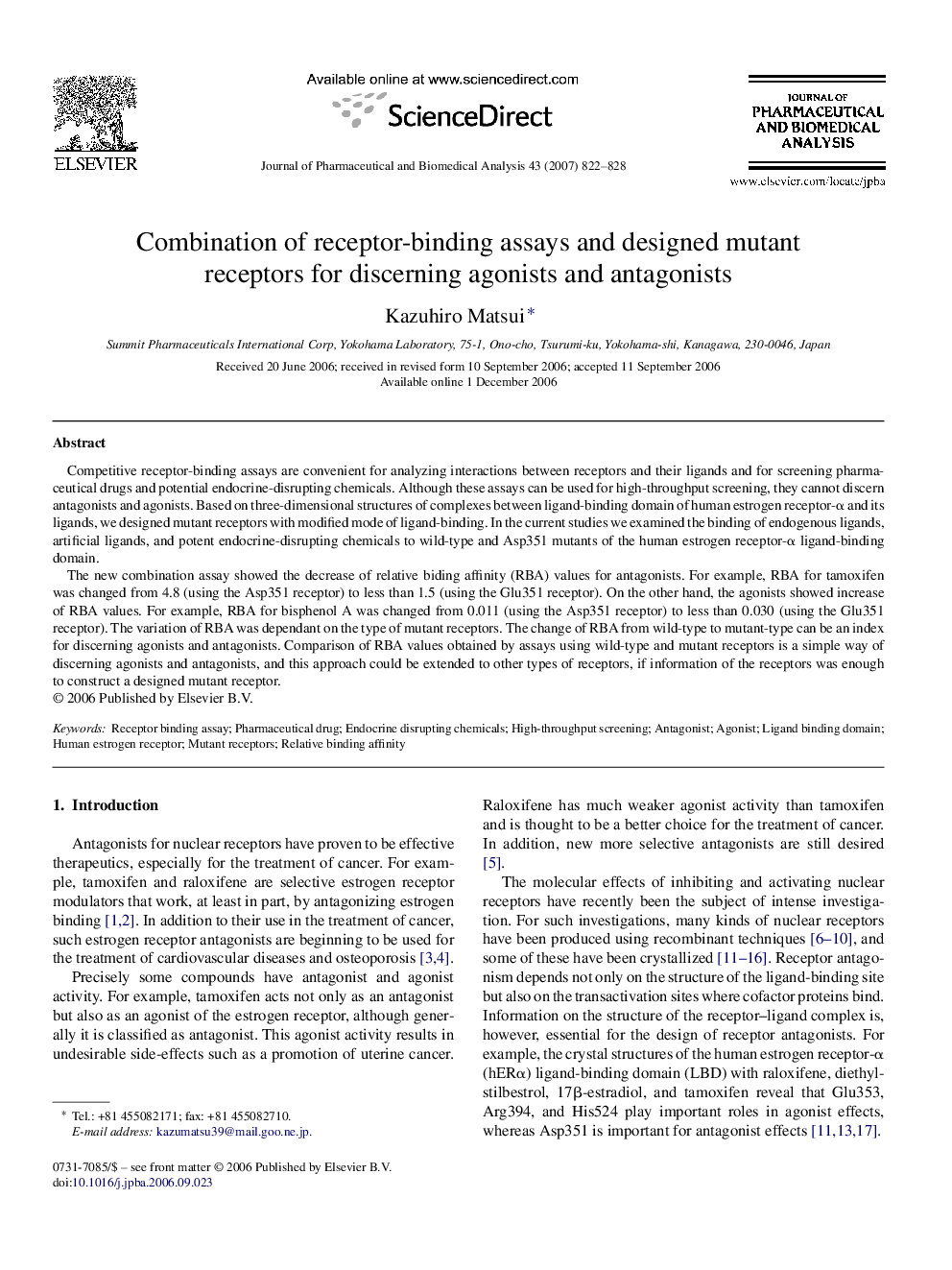| Article ID | Journal | Published Year | Pages | File Type |
|---|---|---|---|---|
| 1224638 | Journal of Pharmaceutical and Biomedical Analysis | 2007 | 7 Pages |
Competitive receptor-binding assays are convenient for analyzing interactions between receptors and their ligands and for screening pharmaceutical drugs and potential endocrine-disrupting chemicals. Although these assays can be used for high-throughput screening, they cannot discern antagonists and agonists. Based on three-dimensional structures of complexes between ligand-binding domain of human estrogen receptor-α and its ligands, we designed mutant receptors with modified mode of ligand-binding. In the current studies we examined the binding of endogenous ligands, artificial ligands, and potent endocrine-disrupting chemicals to wild-type and Asp351 mutants of the human estrogen receptor-α ligand-binding domain.The new combination assay showed the decrease of relative biding affinity (RBA) values for antagonists. For example, RBA for tamoxifen was changed from 4.8 (using the Asp351 receptor) to less than 1.5 (using the Glu351 receptor). On the other hand, the agonists showed increase of RBA values. For example, RBA for bisphenol A was changed from 0.011 (using the Asp351 receptor) to less than 0.030 (using the Glu351 receptor). The variation of RBA was dependant on the type of mutant receptors. The change of RBA from wild-type to mutant-type can be an index for discerning agonists and antagonists. Comparison of RBA values obtained by assays using wild-type and mutant receptors is a simple way of discerning agonists and antagonists, and this approach could be extended to other types of receptors, if information of the receptors was enough to construct a designed mutant receptor.
